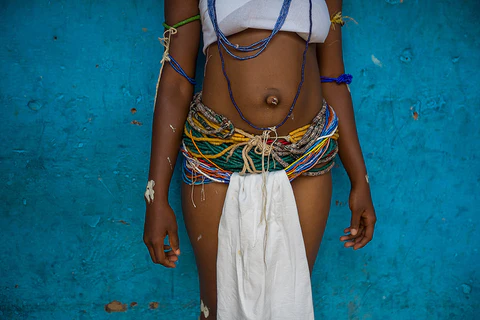Africans, especially west Africans are lovers of beads. Not only do they love them, but it is also an essential part of their rich culture and heritage. As a result of that, beads are revered and highly treasured in this part of the world. Beyond self-expression and decoration, Ghanaian beads are used to send messages and ideas. They also have symbolic features when the colours of the beads are understood.
These beads are usually small and spherical in shape, made from materials like glass, plastic or wood. These beads are pierced for stringing or threading to serve the purpose of beautification for the waist, neck, wrist or ankles. They are one of the most treasured artefacts in Ghanaian culture. They play significant roles in the rites and customs of Ghana. In Ghanaian culture, there are four types of beads.
Despite their similar production process, these beads have different finishing and materials.
They are:
THE CLEAR/TRANSLUCENT BEADS
- Glass is broken into small pieces using a granite stone.
- The glass pieces are then sieved to remove glass powder from the pieces.
- Pieces are then scooped and poured over moulds, filling the holes.
- The kiln is heated at a high temperature.
- Using a long metal spatula, the moulds are placed into the kiln.
- The moulds are then left in the kiln for 30-45 minutes for the glass to melt into the molten mass.
- After firing, the moulds are removed one at a time from the kiln.
- Two small metal spindles are used to hold down the mould.
- Another metal spindle is used to pierce the centre of the bead.
- The bead is then moved around in the mould to shape the bottom of the bead.
- After all the beads have been shaped, they are left for an hour to cool.
- Sand and water are added onto a sandstone with the beads.
- They are then rubbed until the beads are polished to a smooth finish.
- The sand is washed off the beads and dried.

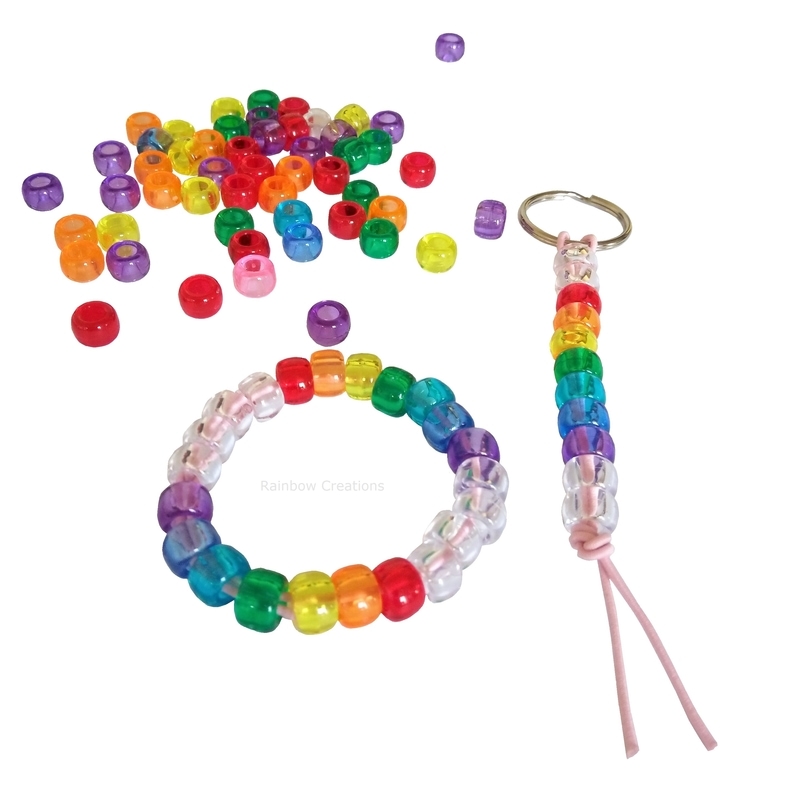
THE POWDERED BEADS
- Glass bottles are broken into smaller pieces by hitting them against a granite stone and then transferred into a mortar where they will be pounded into a fine powder using a pestle.
- Ceramic dye is then added to the glass powder for colouring and then transferred into the moulds.
- A piece of cassava leaf stalk is inserted into each hole of the mould and the surface is smoothed out with a spatula.
- Colored powdered is layered in the moulds to achieve different designs and then fired in the kiln at a low temperature for 5-10 minutes.
- At the end of the firing, cassava leaf stalks will be burnt away leaving a hole in the centre of the bead which will be used for shaping.
- Using two metal spindles, one holds down the mould and the other is inserted in the bead hole to shape the ends of the hot beads.
- The beads are left to cool and then polished.
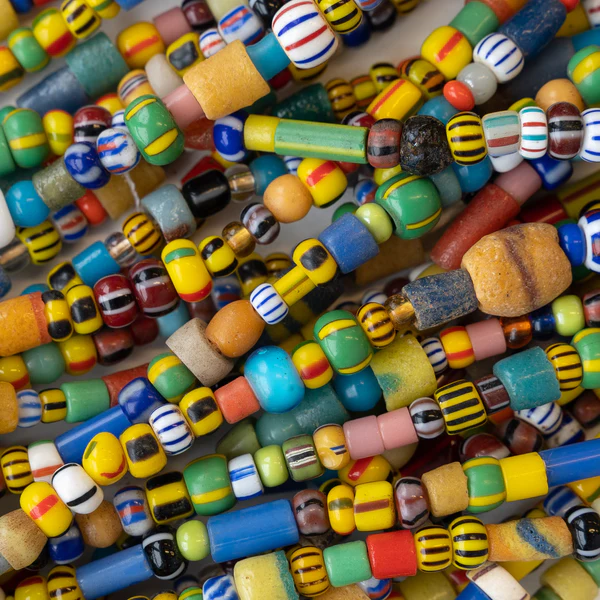
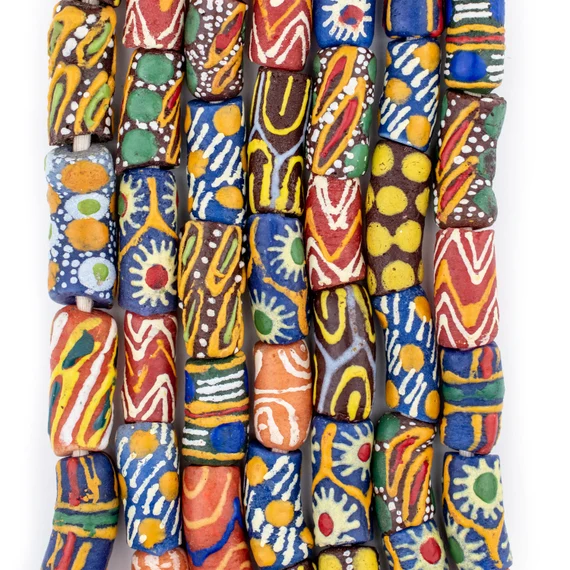
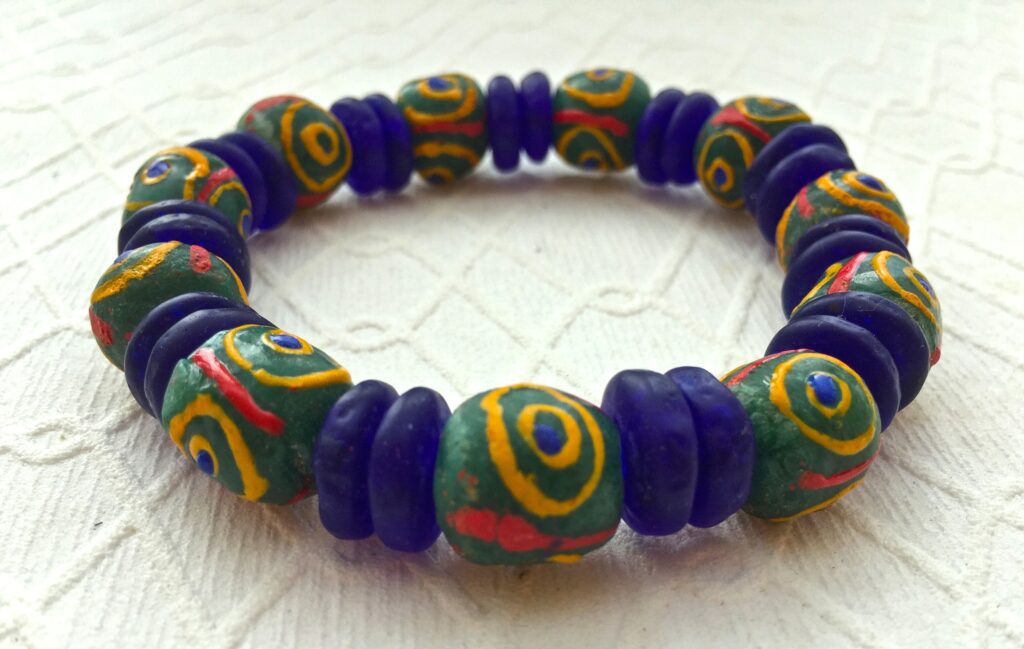
THE PAINTED GLASS BEADS
- The beginning process is the same as that of the powder and clear glass beads.
- Once the beads have been made and left to cool down, they are ready to be glazed and painted.
- A mixture of plain glass powder and ceramic dye are mixed together to create a glaze.
- This glaze allows the bead maker to make designs using the coloured paste they’ve created.
- A small pin or needle is then used to draw designs on each bead.
- After the designs have been painted on the beads, they are left to dry for approximately 15 minutes.
- Certain moulds that have been coated with kaolin (white clay) are used to hold the designed beads.
- The moulds are placed in the kiln at a low temperature and left until the design is able to melt and stick effectively to the bead.
- The moulds are taken out of the kiln and left to cool for an hour. The bead maker then removes the painted beads and polishes them to a smooth finish.

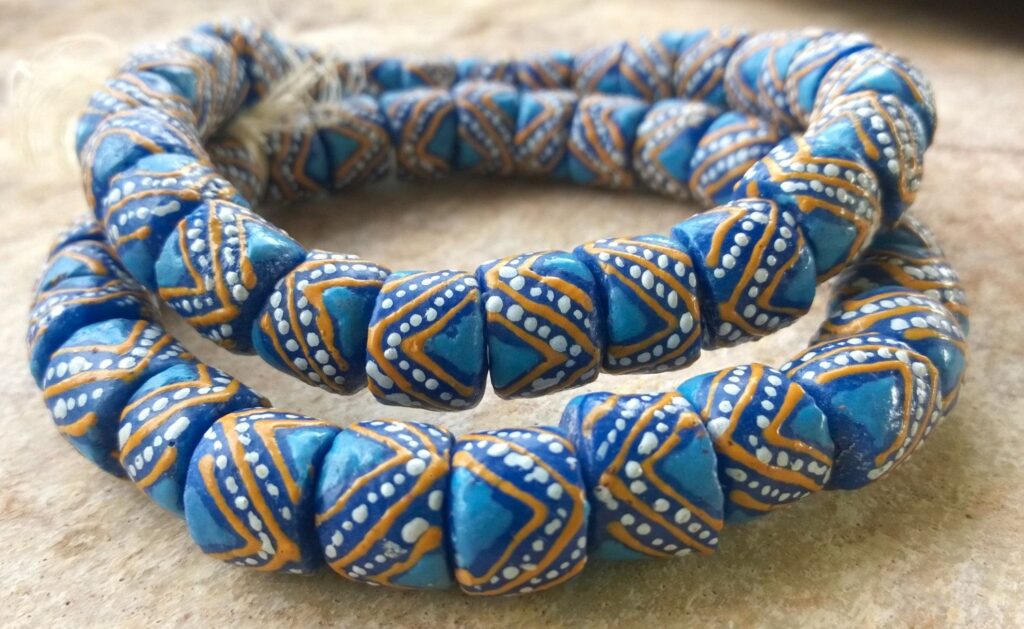
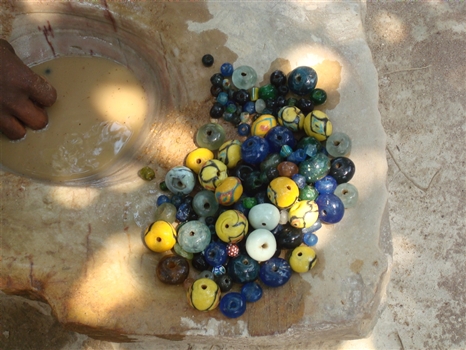
THE SEED BEADS
- First, glass is broken into smaller pieces until they produce a distinct glass powder.
- The main difference in making the seed beads is the size of the moulds being used. The moulds used for seed beads have very small depressions. Much smaller than the rest of the moulds. This allows the beads to come out in a nice tiny shape.
- Glass powder is poured into the tiny holes of the mould and inserted into the kiln.
- After about 45 minutes, the powder is melted into the shape of the seed bead.
- Each bead is then shaped by using a metal spindle to create a hole in the centre of the bead. This allows the bead maker to move the bead around to even the shape.
- The beads cool down and then are polished.


In as much as beads are worn by a lot of people, most cultures are very particular about waist beads. Over the years, wearing waist beads has slowly become the ‘a thing’ in fashion. Although it has always been an element of culture in the African setting, a lot of people are now picking interest in the idea of wearing beads.
Waist beads come in different lengths, sizes, colours and shapes. They can be worn in single strands or multiple strands as they sit beautifully on the waist of the wearer.
Waist beads can also be a great communication tool. In parts of West Africa where the use of waist beads is embraced, it is not only worn for decoration or adornment but also as a cultural expression of social class, nobility, wealth, and happiness.
As earlier stated, waist beads have been a part of African culture, especially West Africa’s, for the longest time. In Nigeria, waist beads were worn as a sign of spirituality, femininity, sensuality, growth, and fertility in the olden days. In Ghana, it is a symbol of a rite of passage and coming of age for young girls and this is usually proof of their sexual maturity. It also helps to accentuate the waist, giving it a smaller frame.

When a baby is born, the baby is traditionally beautified with wrist, hand and waist beads. Once the baby is grown within a year to three years, if it is a boy, he wears neck, wrist, waist and ankle beads. When it is a girl, she continues to wear waist beads. The young girl will wear the beads till puberty; she automatically outgrows them and is given new ones as she transitions into womanhood.


In some other cultures, the waist beads are worn for protection from the “evil eye”. As such, precious beads invoked with charms are added to give maximum protection.
One thing that is common to every bead wearer worldwide is, waist beads serve as a form of body shapers. They are excellent tools for monitoring weight gain and weight loss. A little weight loss or weight gain is easily detected; once the wearer gains weight, the beads easily roll up and eventually break, and if the wearer loses weight, the beads roll down and become so loose that they fall off.
So, if you are going on a weight loss or weight gain journey, it would be an excellent pointer to get waist beads to track your progress somewhat.

